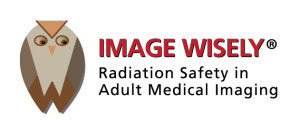X-ray is the oldest and most frequently used form of medical imaging. Routine X-rays involve exposing a body part to a small dose of radiation to produce an image of an internal organ. The most common use of X-rays is to identify and treat bone fractures.
X-rays can also be used to diagnose and monitor the progression of degenerative diseases such as arthritis. They play an important role in the detection and diagnosis of cancer as well, although CT, MRI and PET/CT are usually better at defining the extent and nature of suspected cancer. Contrast X-ray Studies involve a series of X-rays being taken after contrast material has been introduced into the area being studied to provide added image detail.
What will the X-ray exam be like?
X-ray is a fast and easy procedure. The technologist will position you on the examination table and place a digital plate under the table in the area of the body to be imaged. Then the technologist will step behind a radiation barrier and ask you to hold very still without breathing for a few seconds. The radiographic equipment will be activated, sending a beam of radiation through your body to the digital plate. The digital plate then sends the information collected to a computer for processing, viewing and digital storage.
X-RAY & CONTRAST STUDIES
Esophagram
An examination of the pharynx (throat) and esophagus using still and fluoroscopic X-ray images. The X-ray pictures are taken after the patient drinks a solution that coats and outlines the walls of the esophagus (also called a barium swallow).
Upper GI Series
A series of X-rays of the esophagus, stomach, and small intestine (upper gastrointestinal, or GI, tract) that are taken after the patient drinks a barium solution. (Barium is a white, chalky substance that outlines the organs on the X-ray.)
Small Bowel or Small Intestine Series
A series of X-rays of the part of the digestive tract that extends from the stomach to the large intestine.
Barium Enema / Lower GI Series
A series of X-rays of the lower intestine (colon) and rectum that are taken after the patient is given an enema with a white, chalky solution that contains barium. The barium outlines the intestines on the X-rays. These X-rays permit the detection of colon and rectal abnormalities including diverticulosis, diverticulitis, abnormal colon movement, dilation (widening) of the colon, polyps and cancers of the colon and rectum. Air can be instilled into the colon along with the barium contrast medium to further define structures of the large bowel and rectum. Polyps and small cancers are more readily found using this method which is called an air contrast barium enema or a double-contrast barium enema. This is the only kind of barium enema that is appropriate for detecting colorectal polyps and potentially curable colorectal cancers.
Hysterosalpingogram
X-ray of the uterus and Fallopian tubes; usually done in diagnosing infertility to see if there any blockages.
Arthrogram
X-ray of a joint after the injection of a contrast medium to more clearly visualize the joint.
X-ray and Contrast study Locations
This exam is available at the following locations:
Patient Prep
The following exams require no advanced preparation:
- General X-ray
- Esophagram
- Hysterosalpingogram
- Arthrogram




